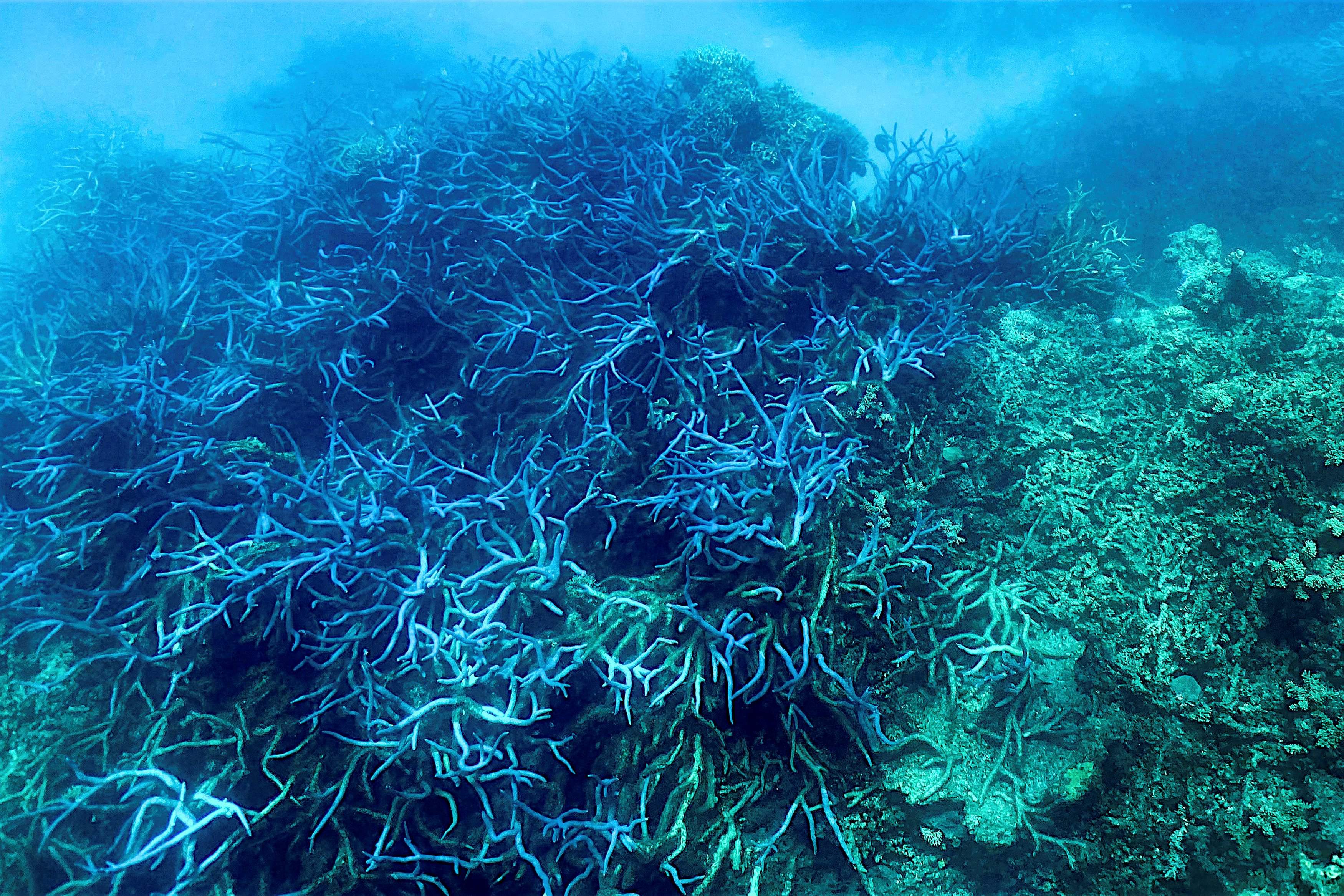Great Barrier Reef suffers sixth major mass bleaching event
The mass bleaching event is the fourth since 2016


Australia’s Great Barrier Reef is suffering from its sixth mass bleaching event since 1998 and the second such event since 2020.
Officials on Friday said the mass bleaching occurred because of rising temperatures. The world’s largest natural reef system is struggling against global warming and ocean acidification.
Aerial surveys of 750 reefs showed widespread bleaching taking place, confirmed the Great Barrier Reef Marine Park Authority (GBRMPA) and Australian Institute of Marine Science (AIMS).
“The bleaching observed from the air was largely consistent with the spatial distribution of the heat stress experienced,” the GBRMPA said in a statement.
Reefs get bleached when stressed coral ejects algae from within its tissue, depriving it of a food source.
Coral can starve and die by turning white as its carbonate skeleton is exposed if conditions do not improve.
Officials said that bleaching was observed at multiple reefs in the reef’s four management areas: the Far Northern, Cairns-Cooktown, Townsville-Whitsunday and Mackay-Capricorn.
The most severe bleaching was reported from the northern and central regions where officials observed some mortality among the reefs.
“More than half of the living coral cover that we can see from the air is severely bleached completely white and can have signs of fluorescence in the colors of pink, yellow and blue,” AIMS coral biologist Neal Cantin told CNN.

While the first mass bleaching event was reported in 1998, others took place in 2002, 2016, 2017 and 2020.
The La Niña phenomenon, that usually brings cooler temperatures, was not able to prevent the latest bleaching event.
It creates more movement in the water and increases rain and cloud cover, helping to reduce average maximum temperatures, helping corals recover.
David Wachenfeld, chief scientist at the GBRMPA said in the statement: “If the water temperature decreases, bleached corals can recover from this stress. It is important to remember that we had a mass bleaching event in 2020, but there was very low coral mortality.”
In a statement, the Australian Conservation Foundation, said: “These repeated bleaching events have hit the tourism industry hard and are a blow to everyone who loves this incredible natural wonder, which is home to a vast array of sea creatures.”
A study published last week revealed the impact of the coral bleaching on the Great Barrier Reef’s brightly coloured fish, that are increasingly becoming rare as corals die. The diversity of the ecosystem’s differently coloured fish has declined sharply since the 1998 global coral bleaching event that had killed off a chunk of the reef’s corals.
The Great Barrier Reef stretches 2,300km down the Queensland coast in Australia and attracts over three million tourists every year.
Join our commenting forum
Join thought-provoking conversations, follow other Independent readers and see their replies
Comments
Bookmark popover
Removed from bookmarks